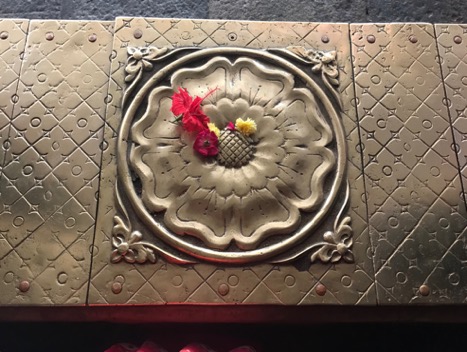
Unfinished-ness: Ritual, Temple Structures, & the Sacred as Visceral Conversations
Jodi Shaw theorizes the sacred in South Indian Hindu temples by maneuvering affect theory and her current ethnographic work in Cidambaram into dialogue. Shaw directs our attention to the pre-verbal and extra-linguistic elements of temple encounters in order to shape a sense of the sacred as “visceral conversations.”
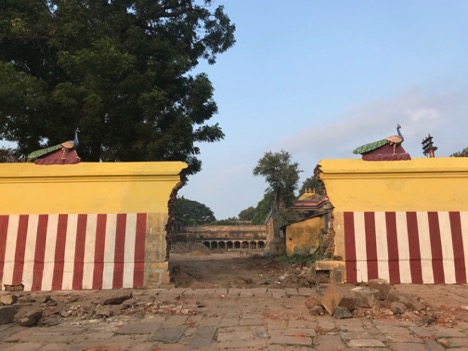 Figure 1: Renovations of the Panntyanayakam Murukaṉ temple near the north gopuram were “completed” in January 2018, but the wall was left unfinished while work continued. Photo by author.
Figure 1: Renovations of the Panntyanayakam Murukaṉ temple near the north gopuram were “completed” in January 2018, but the wall was left unfinished while work continued. Photo by author.
Could affect theory help elucidate the touch and feel of the history of those who walked, sat, and climbed upon the stones of the Nataraja temple in Cidambaram? [i] Could it help make sense of how we make our own imprints in these spaces?
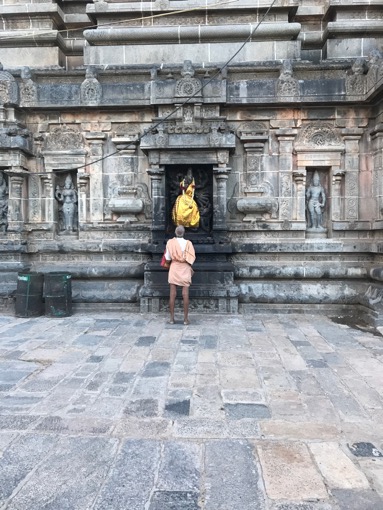 Figure 2: East gopuram. Photo by author.
Figure 2: East gopuram. Photo by author.
The word sacred, seemingly understood by everyone due to its ubiquitous presence in religious studies, is of course a word rife with different meanings and an assortment of arguments about what it is, if it in fact is anything at all. When Crispin Branfoot writes of South Indian Hindu temples that “the site is sacred, not the architecture,” [ii:46] do he and I mean the same thing when we write, “sacred?” Do you and I infer the same bundles of meaning when we read the word “sacred?” When a site is categorized as sacred does it mean the site has been infused with value over the course of generations despite the change of practices and structures built upon it? The idea that society forges the sacred and the sacred forges society comes from a Durkheimian understanding of religion. In his definition of religion Durkheim [iii] describes the sacred as held separate and protected from the profane. It is something around which beliefs and practices develop, and where individuals come together under these shared beliefs and practices to believe in something more than themselves (they call it God, he sees it as society). Conversely, could a site be sacred in the sense of Mircea Eliade’s hierophanies? Those places, oftentimes rocks, mountains, trees and bodies of water, where the divine manifests, and where through repeated ritual action humans step into eternity; into what Eliade contends is our true nature [iv]? Regardless of how the origins of sacred space is theorized, according to practitioners and scholars like Eliade, some places “feel” sacred, or more sacred than others, whether they be houses of worship or a particular clearing in the woods. But what does sacred feel like? Is this feeling transmitted from person to person? Or place to person? Or place to person to place? With these types of questions in mind, I contend affect theory offers a powerful addition to conceptions of sacred space. Affect theory, with its, as Donovan Schaefer [v] suggests, attention to the pre-verbal, to the sensed but not processed, supplies a means to talk about the extralinguistic undercurrents of things without them being a-historic, covertly Christian, and/or anthropocentric, all potential pitfalls in the discussion of religion and/or the sacred [vi]. The following is my initial foray into theorizing the sacred in the South Indian Hindu temple context. It, as my title suggests, is itself unfinished. Herein, I begin to cobble together affect theory with theories of Saiva temple ritual, mantra, and Tamil-ness. In order to flesh out the importance of unfinished-ness and the idea of the sacred as visceral conversations, I move from more personal ethnographic narratives of the Naṭarāja temple in Cidambaram to some of the current conversations about sacrality and South Indian temples and back again.
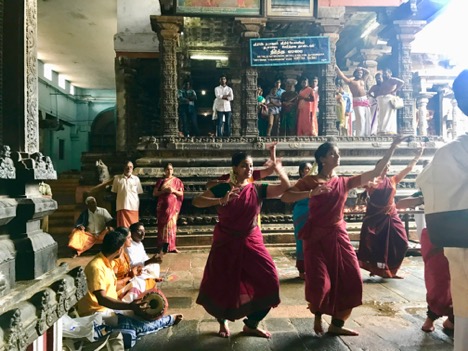 Figure 3: On the mornings of the annual dance festival the performers dance for Nataraja. Photo by author.
Figure 3: On the mornings of the annual dance festival the performers dance for Nataraja. Photo by author.
Morning of July 12, 2016, nearly 7 am. I arrived before the doors opened at 5:45 in order to meet the Brahmin/Yogi/Saiva devotee I met serving a Diksitar [vii] family’s warm, sweet, sticky prasad (consecrated food) on East Car Street during one of the Ani festival’s high points, when Nataraja and Sivakamasundari are carried from the inner sanctum and pulled on carts through the streets amongst thick clouds of incense, drums and horns, dancing, devotional songs, and pop-up children’s rides. The night before he announced he would teach me Manikkavasakar’s Sivapuranam early the next morning. After he’d bathed in the Sivaganga tank and adorned himself with vibhuti (sacred ash), we sat across from the East entrance to the temple. From that vantage point I could see through the entryway, still festooned with palm fronds and fruit, past the dip down of steps and the dark hall-like walkway to the open courtyard and the sight of the meeting place of the golden roofs of the Cit and Kanaka sabhas (the Hall of Consciousness and the Golden Hall, which serve as the inner sanctum and ritual stage respectively).
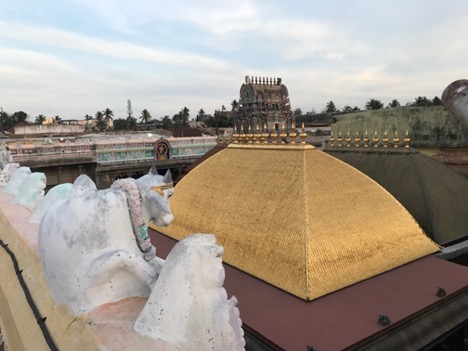 Figure 4: The gold tiled roof of cit sabha (hall of consciousness) and the kanaka sabha (hall of gold) taken from the south west corner of the roof. Photo by author.
Figure 4: The gold tiled roof of cit sabha (hall of consciousness) and the kanaka sabha (hall of gold) taken from the south west corner of the roof. Photo by author.
I tried to follow the words on paper and the sound of his voice as he sang more rapidly than I could read Tamil. He insisted I sing too and told me not to fret about what it meant. We sang together the opening lines of this poem memorized by generations of Saivites across the centuries. Later when I mentioned learning a snippet of the Sivapuranam to a Diksitar, to a retired school teacher I met in the Kali temple, and to an employee at a high-end hotel in Pondicherry they all, almost before I finished saying Sivapuranam, began to sing the first four or five lines. This was my first time to sing it, off key and mispronouncing the words. “இமைப்பொழுதும் என்நெஞ்சில் நீங்காதான் தாள்வாழ்க (long live the foot of the one who never leaves my heart [even] for the length of a blink of an eye) இமைப்பொழுதும். இமைப்பொழுதும். இமைப்பொழுதும் என்நெஞ்சில். என்நெஞ்சில். நீங்காதான் தாள்வாழ்க.” He turned to me in that bright yet morning diffused light and then looked at the entranceway in a manner that invited me to do the same. His words conveyed that surely I must know that once you walk down those 21 steps into the temple something changes inside you… “maybe at a cellular or molecular level.” He emphasized that this was all due to Siva’s grace, of course. You are altered when you step down and into this temple “Om nama Civaya. Om nama Civaya. Om nama Civaya…”
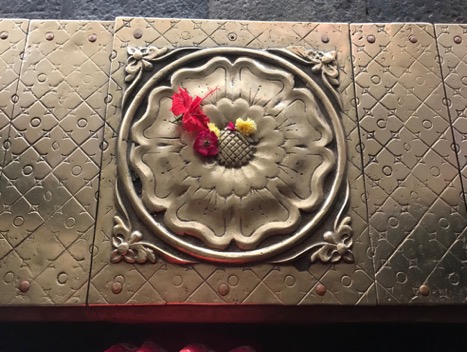 Figure 5: Flowers on the threshold of the east entrance (crossed before reaching the 21 steps). Photo by author.
Figure 5: Flowers on the threshold of the east entrance (crossed before reaching the 21 steps). Photo by author.
December 25, 2014, around eight pm. I entered the East entrance with Douglas R. Brooks and some of his students. He signaled me to pay attention, then whispered the srividya [ix] mantra followed by the pancaksara as we tripped down each syllable and step (ka e ī la hriṁ, ha sa ka ha la hriṁ, sa ka la hriṁ, aum, na-maḥ śi-vā-ya). The sixteen syllable srividya mantra (sodasi) would make a perfect 21, but while I failed to ask him what happens to the last step with this fifteen-syllable mantra (pancadasi), I could easily interpret it as the space between the sounds, or maybe the space for more. Because mantra, the universe, and even temples are never finished [ii, x, xi]. Unfinished-ness is a key idea. In Srividya ritual, and more broadly in Saivism, movement, room for expansion is integral to the efficacy of the ritual and for its continued relevance. The ritual re-enacts what Siva does, or rather what the cosmos does, moving from srsti (creation) to samhara (destruction), or laya (re-absorption), and back again. Don Handelman and David Shulman describe Saiva temple ritual as recreating each day by taking away the previous one, where time and space are then made anew through ritual [xii]. Thus, while one may feel obligated to perform pujas in order to maintain a deity’s presence in a murti, for example, or to continue the momentum built through repeated practice [xiii] it is not a by-route, deadened obligation. It is a creative endeavor; a co-participation in the making of the world and a conversation which may be more visceral than verbal. Mantra does not require grammatically coherent sentences. For example, the srividya mantra is made up of bijas (seeds), which do not have any literal, grammatical meaning. This allows each syllable to simultaneously hold multiple interpretations of meanings and no meaning [xiv]. Whether daily practice includes an elaborate placing of mantras onto one’s body and/or an image (nyasa), or preparing the ground for and then drawing a kolam on the street in front of the home, it is a creative, never-ending process which takes away what was there and makes something new.
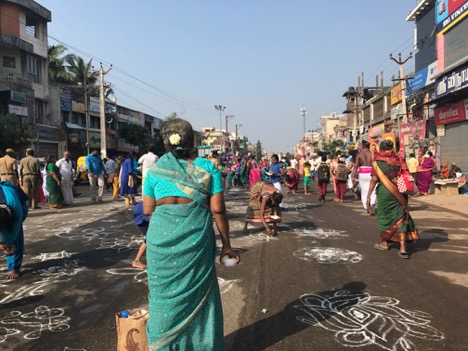 Figure 6: Arudra Darshan festival 1/10/2017, drawing kolams people help sacralize the streets before Nataraja and Sivakamasundari are taken out on their carts. Photo by author.
Figure 6: Arudra Darshan festival 1/10/2017, drawing kolams people help sacralize the streets before Nataraja and Sivakamasundari are taken out on their carts. Photo by author.
Describing the step into a temple as a process of exiting the mundane to cross into the sublime is a well-worn trope [xv] to which some sort of sensed or not sensed transformation is often attributed. One removes shoes, meets the carvings of the gopurams (temple towers), crosses the first of many thresholds, bathes (at least theoretically), passes shrines, all with the awareness of entering a space deemed sacred. Whether that sacrality of space was discovered or forged is a different matter. A regular visitor carries embodied memories of previous visits. They may also carry their parents’ visits, transmitted through the ways mother and father walked and paused through the temple space as they moved their children through their particular temple practices.
Studies of Hindu temples often describe the sanctum as being the oldest and most sacred part of the temple, to which devotees are drawn and from which all other building projects emanate [ii]. Scholars like Leslie Orr and Crispin Branfoot not only challenge this by examining the history of renovations in a number of South Indian temples, but also challenge the standard interpretation that devotees circle-spiral their way through temples in order to get to the tootsie-roll center of the inner sanctum. Devotees, in fact, visit multiple shrines, and some may find little personal resonance with the central deity.
Scholars from the colonial period bemoaned rebuilding projects, fought to preserve sites, and insisted this is because of the sanctity of the structures [see ii, xvi]. However, after close study of the history of temple renovations Branfoot surmises, “the site is sacred, not the architecture” [ii:49]. From the longue duree perspective this is clearly true, we have long lists across traditions and continents of new worship centers built atop the ruins of older worship sites. Within the Hindu temple context Branfoot and Orr, challenging notions of an unchanged inner sanctum, discuss cases where the inner sanctum was demolished and then rebuilt. Branfoot describes temples with inscriptions and/or devotional poetry verifying earlier dates ranging from the sixth to twelfth centuries, but with the rebuilt vimana dating no earlier than the early Nayaka period in the late sixteenth century [ii: 27-28]. There are also plenty of examples of multi-religious sites, sometimes with layers of a previous religious community evident but fallen into disuse like the remnants of Buddhist, Jain, Naga and Yaksa cults excavated in Mathura, the birthplace of Krsna [xvii]. Oftentimes sites are simultaneously sacred to more than one community, like rock-cut Buddhist and Jain temples found alongside each other [x], or the sri pada rock footprint in Sri Lanka believed by Hindus to be Rama’s, by Buddhists to be Buddha’s, and by Muslims to be Adam’s [xviii]. While “the site is sacred, not the architecture” is an important corrective to a “western” interpretation, and dare I say imposition on the life of South Indian temples, I do wish to qualify it for the short-term. At the risk of sounding flippant, the architecture is sacred until it is not.
Sacred in the South Indian Hindu temple context is very hands-on in a way that is cumulatively and practically sensorial. The more flesh touches stone, whether walked on, leaned against, climbed upon, or touched with fingers that are then brought to lips, the more sacred. The more incense wafting, the more sacred. The more substances like sandal, kumkum, and vibhuti smeared, the more flowers delicately placed, the more lamps lit and re-lit with oil leaving black stains on stone, the more sacred. The more bells ring, the more times temple musicians lead mini processions (audible long before they are seen), the more the saints’ songs echo through walkways, and the more Vedic chants chanted, the more sacred. If it becomes sacred in that silent museum quality hands-off way, then it becomes brittle, and Hindu temple sacrality can fade.
Of course, Cidambaram has places which are hands-off to most. Unless you are a Diksitar, you and I will never enter the Cit sabha and we will never touch Nataraja and Sivakamasundari. However, among the Diksitars there is near constant hands-on activities in these sanctum places, some of which are visible to devotees and some of which are not. For example, in early 2017 I was woefully confused about the color of the curtain covering the rahasya (the secret). Everything I read said it was black and that it was changed twice a year. However, when I stood with the morning and evening group of, what I referred to as the dinamum ladies (daily ladies) in our spot with a clear sidelong view for when it was pulled aside and the rahasya revealed, the curtain looked faded to gray. Even from within the east side of the Kanaka Sabha when I would lean over the rail near the five steps into the Cit Sabha to gaze at Nataraja, and then look to his right to peak at the curtain up close, it looked gray. One evening a Diksitar invited me to enter the Kanaka Sabha through the west entrance at a time earlier than I normally went inside. The light was such that as I stood up against the silver lattice right in front of the curtain I could see it was black. What made it appear gray from a distance were thick streaks of sandal paste. Sandal was smeared nearly everywhere inside the Cit Sabha that evening.
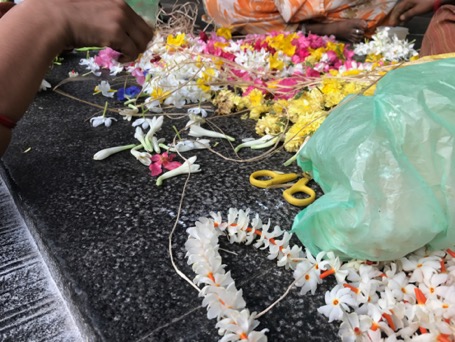 Figure 7: A core group of women come every morning to make flower garlands for the deities. They stand, sit and lean on the stone, and if the scissors are out of reach they cut the string on the stones. Photo by author.
Figure 7: A core group of women come every morning to make flower garlands for the deities. They stand, sit and lean on the stone, and if the scissors are out of reach they cut the string on the stones. Photo by author.
What do I mean when I write architecture is sacred until it isn’t? Branfoot, Orr, and Samuel Parker all successfully demonstrate that the living South Indian temple is ever unfinished. It must be unfinished in order for it to continue to grow [xi]. The temple is a changing, pulsing thing. The temple sheds its skin. When funds are available, there are regular renovations of temple spaces, but very little restorations. A temple like the Nataraja temple is steeped in history. Texts, websites, and temple patrons will tell anyone and everyone how ancient the site is, even if scholars do not agree on the early, pre-recorded ‘mythical’ history date attested in the earliest stala purana (ancient tale of a place), the Cidambaramahatmya (12-13th century). According to the stala puranas Siva has always danced in Cidambaram, but it was not until the gods witnessed his dance that they built the temple at his bidding [xix]. Maybe because the temple’s historical pedigree is a given among those connected with it there is no need to restore things to the way they were. Or maybe the drive to restore is a foreign one. Temple stories, Siva’s stories, the Goddess’ stories, the saints’ stories all interweaving within this temple and many interconnected to other temples, are carved into pillars and painted on ceilings. Some of these carvings and paintings are from the 11th century, some from the 20th, a few which are older, and a few which are younger than those periods. Some of these figures rise and fall in prominence like waves over the course of history. Others have surely been forgotten. While still others remain present but their names have changed [xx].
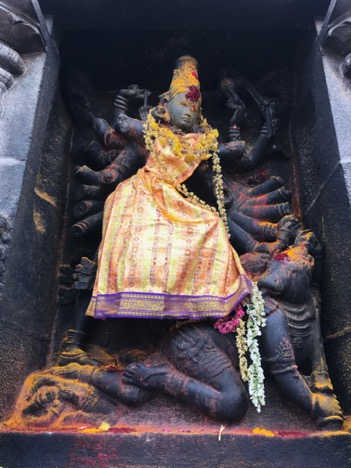 Figure 8: East gopuram: Durga/Tripura Sundari Devi. Photo by author.
Figure 8: East gopuram: Durga/Tripura Sundari Devi. Photo by author.
The architecture, I believe, is sacred not simply because it is infused with value or because deities and saints are carved into pillars (some of which are sources of worship in their own right) but in part because, as Valentine Daniel’s study of Tamilness [xxi] suggests, of its porousness. For me, the most influential section of Daniel’s work is the idea we imbibe the earth into us when we walk it and as we do we imbibe something of all those who have walked that same ground before us. Different earth changes you as does the company of different people [xxi, xxii]. This porousness and fluidity between persons and places in Tamil culture reinforces and adds another culture’s self-knowledge to the exchanges sensed at pre-verbal levels found in affect theory. This similarity is particularly evident in Teresa Brennan’s The Transmission of Affect which challenges post-enlightenment claims of a self-contained individualism to argue there are transmissions of affects between peoples and places, which often change people at a subtle biochemical and neurological level [xxiii]. This is significant because affect theory’s various genealogies are virtually all sourced from “western” thought [xxiv], and it is sometimes critiqued as yet another “universalism.” Thus, these ethnographic studies where regular folks in very specific places attest to exchanges between peoples and places (generally different places within the same village), which are felt or sensed before they are verbalized, and often changes the parties involved contributes another layer of flesh to theory.
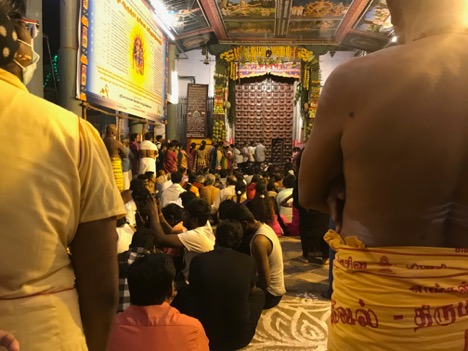 Figure 9: Arudhra Darshan festival 1/1/2018. 3:30 am, the crowd waits for the doors to open. Photo by author.
Figure 9: Arudhra Darshan festival 1/1/2018. 3:30 am, the crowd waits for the doors to open. Photo by author.
Granted Daniel’s discussion of earth is just that, earth. Earth teems with levels of fecundity that stone does not. While the exchanges in affect are generally between living things, there is also the specter of lives sensed in places, whether it is an event(s), which happened and is carried on by stories and cultural memory [see xxv, xxvi], or the residual others have left behind, a devotee’s layers of previous visits, or some other element not yet captured into words. In other words, I understand residues of centuries of memory as part of affect’s framework. In this way, the unfinished-ness some affect theorists talk about as emotions, memories, transferences between bodies, spaces and places is akin to the ever unfinished-ness of the temple.
The architecture is sacred as long as various types of visceral conversations happen therein. They may be like the more formal mantra rituals discussed above, informal rituals like the men and women who every day strategically place tiny flowers on certain carvings, and/or they may be visceral conversations with the specters of history. Conversations end, and new ones begin. A very simple example can be found in comparing a few photos from James C. Harle’s 1963 book Temple Gateways in South India: The Architecture and Iconography of the Cidambaram Gopuras, with how these images look now. One of the only photos of a worshipped image is of the Durga on a low tier of the North gopuram [xx plate 149]. She is clearly worshipped because of the flowers near her head and adorning her weapons, as well as by the powder on her feet (turmeric? vibhuti?). When I looked for her in 2016 she was rarely visible, hidden by a lush garden and enclosed by a locked gate, which was not present in 1963 [xx plate 42]. However, the multi-armed goddess on the low tier of the East gopuram, who stands broken and unadorned in Harle’s photo under the name Tripura Sundari Devi [xx plate 167], in 2016 was always well adorned. Temple visitors consider her Durga. She is always dressed like a murti in a sanctum, and always decorated with kumkum and turmeric. There are often garlands of flowers in her hair, and oil lamps lit at her feet. One conversation ends, and another begins. An architectural element is sacred, until it is not.
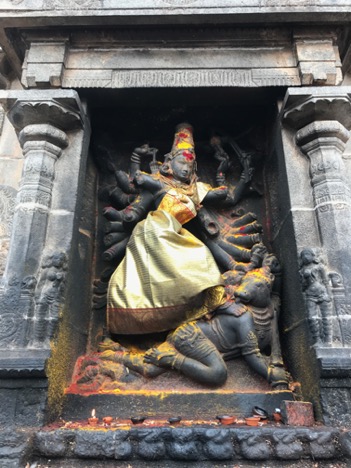 Figure 10: East gopuram: Durga/Tripura Sundari Devi. Photo by author.
Figure 10: East gopuram: Durga/Tripura Sundari Devi. Photo by author.
Endnotes and References
- i. Cidambaram is a town in the South Indian State of Tamil Nadu, which is synonymous with the Nataraja temple, and temple grounds (approximately 40 acres) located at its center. Among South Indian devotees of Lord Siva it is simply known as the temple. One of its many distinctive features is that the main deity under worship, Nataraja (Dancing Siva or more literally, The Lord of Dance), and his consort Sivakamasundari (The Lovely One Whom Siva Desires) are bronze processional deities, which are taken out into the street twice a year for the temple’s major festivals. Typically, in South Indian temples, the central deity is made of granite and stays “permanently” in its shrine, while the separate bronze processional deities are ritually enlivened for festivals.
- ii. Branfoot, Crispin. “Remaking the Past: Tamil Sacred Landscape and Temple Renovation.” Bulletin of SOAS 76, 1 (2013). 22-47.
- iii. Durkheim, Emile. Elementary Forms of Religious Life. Carol Cosman, translator. Oxford: Oxford University Press 2001 [1912].
- iv. Eliade, Mircea. Patterns in Comparative Religion. Lincoln: University of Nebraska Press, 1996 (1958). 32-33.
- v. Schaefer, Donovan. Religious Affects: Animality, Evolution, and Power. Durham: Duke University Press, 2015.
- vi. The underlying Christian worldview in much of religious terminology is a topic of extensive study. Words like sacred, mystic, faith, holy, God, creation etc., tend, for those of us raised in “western” educational systems, to be understood within, if not Christian, at least an Abrahamic worldview. See Assad, Talal. Genealogies of Religion: Discipline and Reasons of Power in Christianity and Islam. Baltimore, MD, John Hopkins University Press, 1993. Masuzawa, Tomoko. The Invention of World Religions: Or, How European Universalism Was Preserved in the Language of Pluralism. Chicago: University of Chicago Press, 2005. King, Richard. Orientalism and Religion: Postcolonial Theory, India and the Mystic East. London and New York: Routledge, 1999.
- vii. Diksitars (the initiated) are a special Brahmin priestly community in Cidambaram who serve the temple. The temple is one of the only ones in India without any government control (something battled over in a number of court cases) and is basically “owned” by the Diksitar community.
- viii. Translations are my own, unless otherwise stated.
- ix. Srividya (Auspicious Wisdom) is an erudite Goddess centered Tantric tradition (Sakta Tantra), which, in Tamil Nadu is primarily practiced by Brahmins. The mantra has a number of differing variations among lineages including the number of syllables and which syllables it contains. For more on Srividya see Brooks [xiv].
- x. Orr, Leslie. “Temple: Form and Function.” Brill Encyclopedia of Hinduism. Leiden: Koninklijke Brill, 2010. 495-510.
- xi. Parker, Samuel K. “Sanctum and Gopuram at Madurai: Aesthetics of Akam and Puram in Tamil Temple Architecture.” Tamil Geographies: Cultural Constructions of Space and Place in South India, Martha Ann Selby and Indira Viswanathan Peterson, editors. Albany: State University of New York Press, 2008. 143-172.
- xii. Handelman, Don and David Shulman. Siva in the Forest of Pines: An Essay on Sorcery and Self-Knowledge. New Delhi: Oxford University Press, 2004. 61.
- xiii. See Hancock, Mary Elizabeth. Womanhood in the Making: Domestic Ritual & Public Culture in Urban South India. Boulder & Oxford: Westview Press, 1999.
- xiv. Brooks, Douglas, Renfrew. Auspicious Wisdom: The Texts and Traditions of Srividya Sakta Tantrism in South India. Albany: State University Press, 1992. 97-103.
- xv. According to the treatise on temple construction, the Hindu temple is a map of the cosmos, and a modeled after the human body, with various subtle body anatomy elements (like the energy centers or cakras and their association with the elements) found therein. In theory, moving through the temple takes devotees more deeply into the “creative energy of the universe.” Bharne, Vinayak and Krupali Krusche. Rediscovering the Hindu Temple: The Sacred Architecture and Urbanism of India. Newcastle upon Tyne: Cambridge Scholars Publishing. 2012. 93.
- xvi. Hancock, Mary Elizabeth. The Politics of Heritage from Madras to Chennai. Bloomington: Indiana University Press, 2008.
- xvii. Vaudeville, Charlotte. “Braj, Lost and Found.” Indo-Iranian Journal 18 (1976): 195-213.
- xviii. Bayly, Susan. Saints, Goddesses and Kings: Muslims and Christians in South Indian Society 1700-1900. Cambridge: Cambridge University Press, 2003 [1989].
- xix. Loud, John Alden (1988). The Diksitars of Chidambaram: A Community of Ritual Specialists in a South Indian Temple. PhD Dissertation. University of Wisconsin, Madison.
- xx. Harle, J.C. Temple Gateways in South India: The Architecture and Iconography of the Cidambaram Gopuras. Oxford: Bruno Cassirer, 1963. (See Harle on the East and West gopurams’ goddess who looks a lot like Durga, but is called Tripurasundari in inscriptions).
- xxi. Daniel, E. Valentine. Fluid Signs: Being a Person the Tamil Way. Berkeley: University of California Press, 1984.
- xxii. Mines, Diane P. Fierce Gods: Inequality, Ritual, and the Politics of Dignity in a South Indian Village. Bloomington and Indianapolis: Indiana University Press, 2005.
- xxiii. Brennan, Teresa. The Transmission of Affect. Ithaca and London: Cornell University Press, 2004.
- xxiv. I write “virtually” in part, because, as some post-colonial literature attests, there are mutual influences between “East” and “West.” The influence of the west on a post-colonial country like India is a well known subject, but India’s influence on the “West” is a lesser known topic.
- xxv. Stewart, Kathleen. Ordinary Affects. ebook. 2007.
- xxvi. McCormack, Derek P. “Sensing Affective Afterlives: The Spectral Geographies of Material Remains.” Annals of the Association of American Geographers, Vol. 100, No. 3 (July 2010): 640-654.